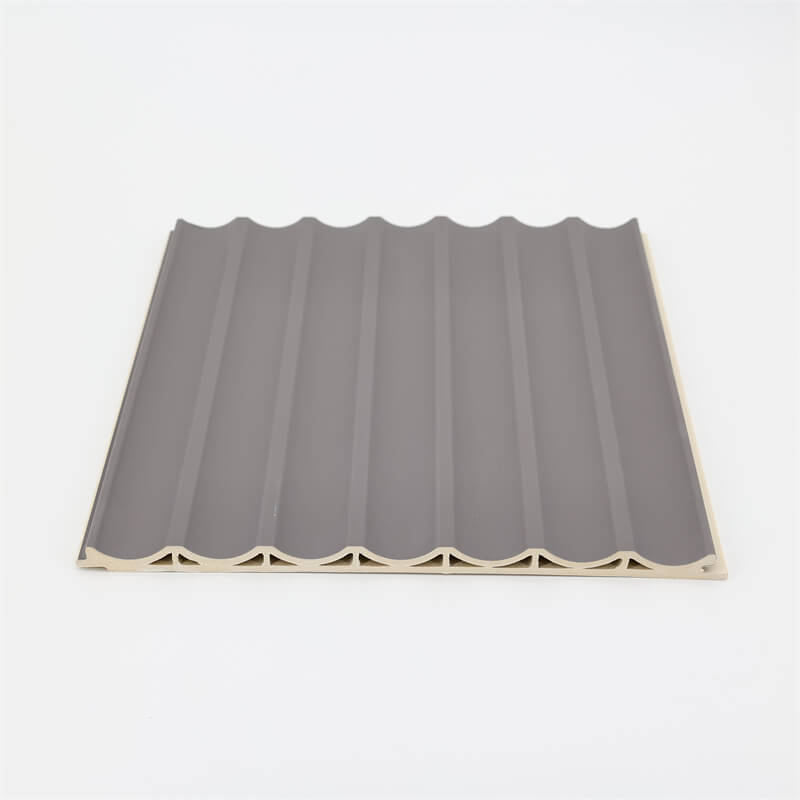
As environmental concerns become more pronounced in our world today, sustainable design solutions are taking center stage in the realm of architecture and interior design.
Homeowners, architects, and designers are increasingly seeking eco-friendly materials that contribute to a greener planet without compromising on aesthetics or functionality.
In this quest for sustainability, WPC (Wood-Plastic Composite) fluted panels have emerged as a revolutionary solution that blends the timeless beauty of wood with the durability of plastic.
This article explores the role of WPC fluted panels in sustainable design and how they enable the creation of eco-friendly spaces.
From their eco-conscious composition to their versatility in application, we will delve into the many reasons why embracing WPC fluted panels is a commendable choice for environmentally responsible projects.
Join us as we discover the potential of WPC fluted panels in driving sustainable design solutions and elevating spaces that are not only aesthetically pleasing but also environmentally conscious.
The Sustainable Composition of WPC Fluted Panels
WPC fluted panels are crafted from a unique blend of wood fibers and recycled plastic, resulting in a composition that embodies sustainability.
The wood fibers used in these panels are derived from responsibly managed forests, ensuring that their sourcing is environmentally friendly and socially responsible.
By choosing WPC fluted panels, homeowners and designers support sustainable forestry practices, promoting the responsible use of renewable resources.
The inclusion of recycled plastic further reinforces the eco-friendliness of WPC fluted panels.
By repurposing plastic waste that would otherwise end up in landfills or oceans, these panels contribute to waste reduction and environmental preservation.
Recycling plastic for use in WPC fluted panels helps alleviate the strain on our ecosystems and supports the transition towards a circular economy.

Energy-Efficient Manufacturing Process
Beyond their sustainable composition, WPC fluted panels also excel in their energy-efficient manufacturing process.
Compared to other materials that require high-energy production methods, the manufacturing of WPC fluted panels consumes significantly less energy.
The low-energy process contributes to a reduction in greenhouse gas emissions and supports efforts to combat climate change.
The manufacturing of WPC fluted panels also minimizes the use of harmful chemicals typically associated with other building materials.
This ensures that the panels not only have a lower carbon footprint but are also safer for occupants and the environment.
Longevity and Reduced Waste Generation
One of the most significant advantages of WPC fluted panels lies in their remarkable longevity.
These panels are engineered to resist wear, decay, and insect damage, ensuring they remain in excellent condition for extended periods.
As a result, they require minimal maintenance and reduce the need for frequent replacements.
The extended lifespan of WPC fluted panels translates into reduced waste generation over time.
Traditional building materials often require periodic replacements, leading to a substantial amount of waste that ends up in landfills.
By choosing WPC fluted panels, homeowners and designers contribute to waste reduction, aligning with the principles of a circular economy.

Versatility and Sustainable Applications
WPC fluted panels’ versatility extends to their sustainable applications in various interior and exterior spaces.
These panels can be used in an array of design elements, providing eco-friendly solutions for both residential and commercial projects.
In interior spaces, WPC fluted panels serve as elegant wall paneling, adding a touch of sophistication to living rooms, dining areas, and bedrooms.
They can also be used as decorative accents on ceilings, enhancing the overall aesthetics while promoting sustainability.
For commercial establishments, WPC fluted panels offer a sustainable alternative for wall coverings in restaurants, hotels, and retail spaces.
Embracing WPC fluted panels in commercial projects demonstrates a commitment to eco-conscious design, resonating with environmentally conscious customers.
Moreover, WPC fluted panels can be utilized as exterior cladding for buildings, providing a durable and attractive façade.
Their resistance to the elements ensures that the building maintains its elegance and charm over the years, contributing to sustainable architecture.
Sustainable design solutions are vital for creating a greener and more environmentally conscious world.
WPC fluted panels offer a commendable contribution to this endeavor, embodying sustainability in their composition and manufacturing process.
By using wood fibers from responsibly managed forests and recycled plastic, these panels promote sustainable forestry practices and waste reduction,
while their energy-efficient manufacturing process supports climate action.
Beyond their eco-friendly attributes, WPC fluted panels also excel in their longevity and versatility, providing sustainable applications for interior and exterior spaces.
From elegant wall paneling to durable exterior cladding, these panels enable the creation of eco-friendly spaces that exude both style and responsibility.
As architects, designers, and homeowners embrace WPC fluted panels in their projects,
they demonstrate their commitment to sustainable design solutions and contribute to a more sustainable and eco-friendly built environment.
By choosing WPC fluted panels, we not only elevate spaces aesthetically but also cultivate a sustainable future for generations to come.
